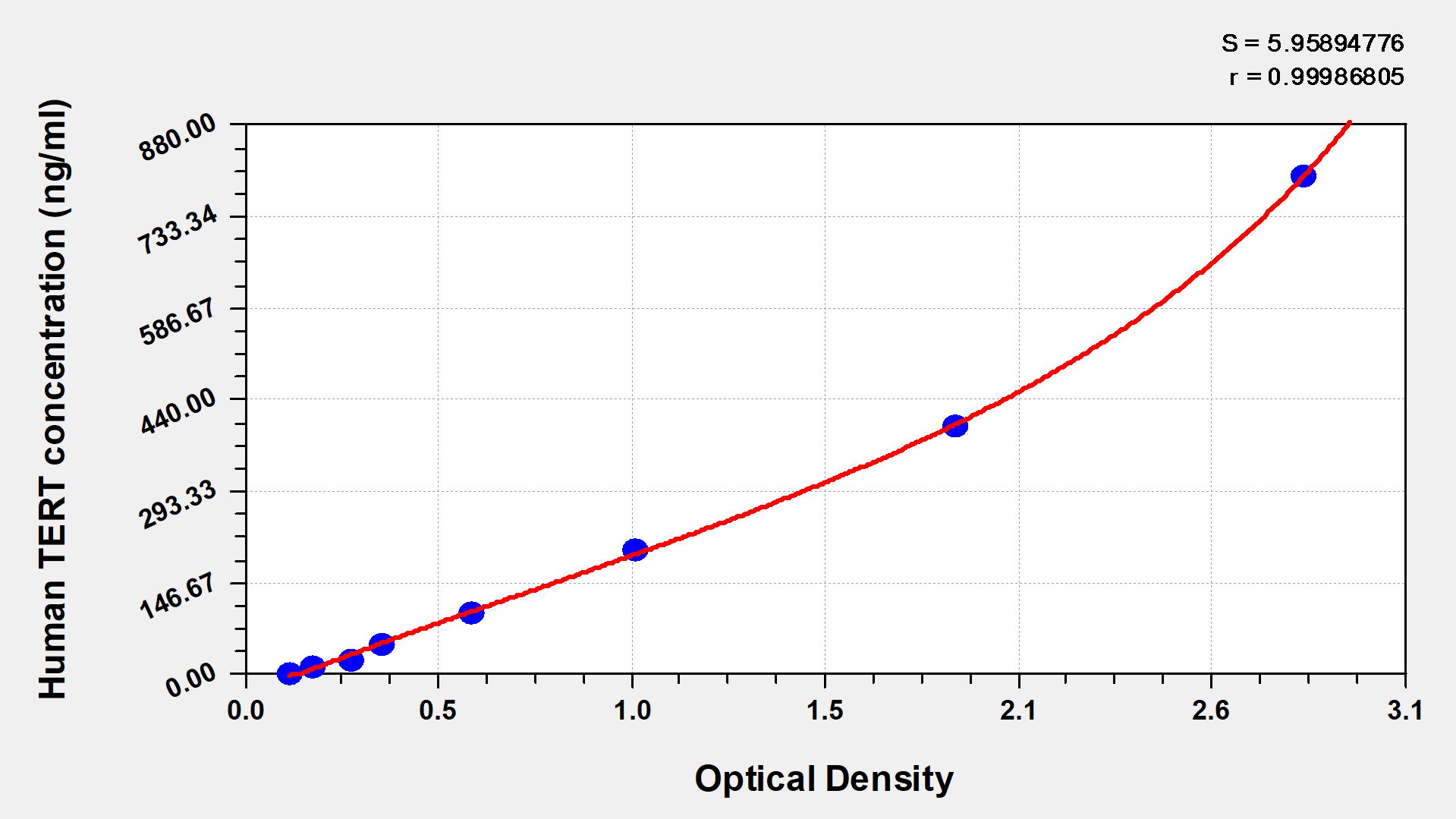The Human Telomerase reverse transcriptase (TERT) ELISA kit allows for the in vitro quantitative determination of TERT concentrations in serum, plasma, or cell culture supernates. It is not intended for diagnostic use. This assay kit was designed and optimized for cancer research use in humans. The kit has undergone rigorous quality control in multiple parameters, including sensitivity, specificity, precision, linearity, recovery, and inter-batch difference. Refer to the product instructions for more details.
This assay employs the quantitative sandwich enzyme immunoassay technique, in which TERT in the samples or standards are sandwiched between pre-coated TERT antibody and Biotin-conjugated TERT antibody. HRP-avidin is then added to the wells. Following a wash to remove any unbound reagent, the TMB substrate solution is added to the wells and color develops in proportion to the amount of TERT bound in the initial step. The color development is stopped upon adding the stop solution, and the intensity of the color is measured at 450 nm via a microplate reader. The levels of TERT in the samples can be determined by referring to the O.D. (optical density) of the samples to the standard curve.
TERT is a catalytic subunit of the telomerase. It is involved in a wide range of functions, including the modulation of signal transduction and gene expression, and protection against oxidative damage independent of its telomere elongation activity. TERT also mediates stem cell function, tissue homeostasis, aging, and carcinogenesis.






